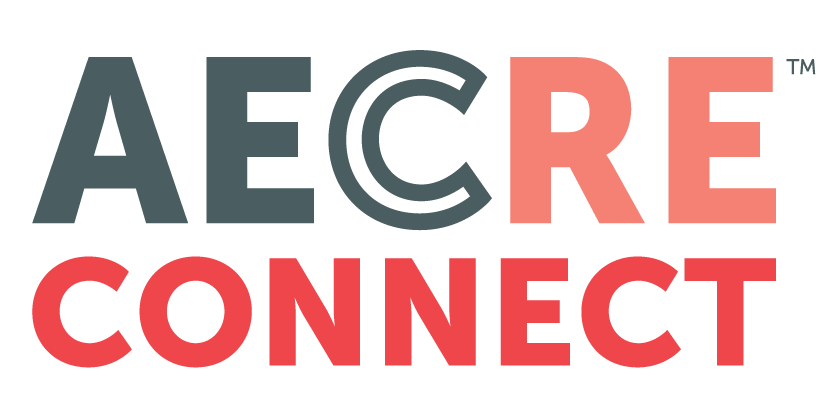Read the original article from ArizonaEconomy.com, a product of Elliott D. Pollack & Company, here.
The extent of the economic decline caused by the effects of the closure of “non-essential” businesses and the stay-in-place orders can be seen in employment data. The three tables below tell the story. Employment peaked during the Great Recession in January 2008. The trough was 23 months later in February 2010. During that period, the economy lost more than 8.7 million jobs or 6.3% of peak employment. All sectors lost jobs except Educational and Health Services and Government. From the trough in February 2010, the economy went on a 10-year run peaking again in February 2020. During that period, the economy added more than 22.7 million jobs. From the peak in February through April (the latest data available at the moment), the economy lost 21.4 million jobs. In other words, almost all the jobs created over the last 10 years have been wiped out in just two months. All sectors lost employment. The 14% decline in two months is more than twice the rate of job loss suffered during the entire Great Recession. And the worst is still in front of us. By the time the dust settles, the national unemployment rate will probably be between 20%-25%. A recovery will start as the economy slowly reopens, but it could take years to get back to where we were in February.This economic disaster was not caused by the usual suspects. It was not the FED fighting inflation. It was not a bubble. It was not bad fiscal policy. It was not the FED misjudging the amount of tightening needed to slow the economy. It was a Black Swan event, the timing and depth of which were totally unknowable and unknown.The economy can’t fully start a recovery until there is a vaccine or until there is something that mitigates the effect of the virus. But, at least many states are starting to open up. This is an important first step and should be accelerated to the extent possible. The original purpose of the lockdown was to “flatten the curve” so that medical infrastructure would not be overwhelmed and that the necessary resources could be brought to bear on the problem. Those things have largely been accomplished with flying colors. We have “flattened the curve” and know a lot more about who the virus attacks.As the economy begins to open, there are several things to keep in mind. The states that have reopened have seen anemic recoveries. This should not be surprising given the limited way economies have opened. It is not just that there are still many “I can’t” rules still in place. There are many “I won’t” issues. Until more of the economy opens and fear subsides, it will be a long haul. There will be progress. But, it is important to understand why the economy has to open as soon as realistically possible and the risks to us all if it doesn’t.The longer the economy is shut down, the worse the effects will be and the longer the recovery will take. Deeper and longer recessions may create longer lasting damage. In this case, the loss of thousands of small and medium sized businesses can destroy employment legacies and limit the strength of a recovery. These types of companies are a principle source of job creation. Many are already gone for good. Many that are left will have to deal with unavoidable bouts of insolvency that could take years to work through. These issues will discourage business investment and expansion. This, in turn, will create a longer period of low productivity and, therefore, lower income growth. Also, long stretches of unemployment could well end a worker’s career as their skills lose value. This in and of itself could create significant debt issues. Fortunately, both fiscal and monetary policy has been directed at many of these issues.Without government help, the economy would have been divided into two groups. Those who continued to be fully employed during the crisis. That portion of the population, largely but not entirely, remain viable and probably see cash piling up because they can’t get out to spend or the stores they want to spend at are closed. The other group who lost their jobs due to the impact of the COVID-19 virus would otherwise find themselves in massive financial difficulty that would take years to dig out of and would prevent the recovery from fully taking glace.According to the Fed, about 40% of the 20+ million already unemployed have incomes of less than $40,000 per year. This is not surprising because of the nature of the first businesses to close. Restaurants, bars, many retail stores, travel related businesses and the ripple effects caused by these closures just to mention a few, generally pay less than median income. That being said, medical and dental related professions have also suffered significantly. Also, hospitals largely sat idle waiting for the rush of COVID-19 cases that fortunately did not materialize and many health workers were laid off. The ripple effects of all of those people being idle caused unemployment difficulties for all other sectors as well.It is vitally important to make sure that those who lost their job as a result of the effects of the virus do not come out of this deeply in debt. That is why it was so important that the CARES Act was passed. It was a worthy effort, although it does create incentives not to work. Unfortunately, some fell through the cracks and the implementation was slow at first. These issues will hopefully be corrected in the next relief bill called the HEROES Act. (I think more thought went into the name than the content.) This bill needs a lot of work before it becomes law.The present version of the HEROES Act is an admission that the crisis will be with us at least until 2021.In addition, the disincentives not to go back to work remain because many who became unemployed could well collect more from unemployment benefits than they might by going back to work. This must end. Those disincentives stymie market forces. They prevent the market from being able to adjust to a different environment. They work against the natural shifting of resources to those parts of the economy that can be productive during the current situation from those that can’t. It’s simply ridiculous. It’s better for someone to switch from being a baggage handler to being a warehouse worker than it is for that person to sit on the couch. We need the bill to create incentives to work, not incentives not to work.That being said, both fiscal and monetary policy have rapidly (especially by government standards) and forcefully (although not perfectly) addressed the major issues that would have otherwise created a disaster going forward. That doesn’t mean that anything should be passed. But, at least both parties seem to recognize the urgency, so perhaps sanity can (mostly) prevail. The cost for the fiscal policies created to deal with this crisis will ultimately be staggering. But, although there will be waste, it generally gets the job done so at the other end of this, most people can participate in the ultimate recovery. And it beats the alternative.From a monetary policy standpoint, the Fed clearly recognizes how risky shutting down major portions of the economy for long periods of time can be. They seem to recognize what needs to be done. They recognize that this will not be a “V” shaped or not even a “U” shaped recovery. In a recent speech, Fed Chairman Jerome Powell stated that the Fed will do whatever it can to prevent a long and deep recession that could take years to resolve. The issues include the loss of thousands of businesses and financial instability of households that could result in a long period of stagnation and low productivity.In order to facilitate the flow of funds to all sectors of the economy, the Fed will directly purchase treasury instruments and agency mortgage backed securities. It has created funding measures such as facilities to keep money flowing to households, businesses and state and local governments and have undertaken temporary regulatory initiatives to banks to help keep money flowing to non-financial business. Without getting technical, many of these moves are unprecedented. They want to make sure the problems at the other end won’t be lack of liquidity in the system. And this will probably not be the last rescue operation. The Fed has pledged to do whatever it can to keep the economy going and help fix damage that would take years to resolve. The combination of a very forceful combination of fiscal and monetary policies will help.On Friday, Jordan Rose asked me what sectors of the economy would reopen most quickly. I spent some time thinking about that. Coincidently, last night I watched a YouTube video where Peter Linneman, a well-known and, for good reason, highly thought of economist covered that same ground. He added to the concept of “I can’t” vs. “I won’t” activities. An “I can’t” activity is something you want or have to do but the shutdown edicts prevent it. An “I won’t” activity is one that you now can do but you don’t really want to do because you don’t feel safe doing it. What sections are likely to come back strongest? How about where there is the most demand that people can and want to access. In other words, where you “can” and where you “want” to.The most obvious sector will be health care. With elective surgeries, other procedures, and various types of testing, as well as most in-person doctor visits being put on hold until very recently, that sector will come back quickly and will be at full capacity until the backlog is dealt with. Given that is a large sector of the economy, it will have a very positive effect, not only directly, but indirectly as well. The ripple effects of the spending of the medical community and the employees of companies where the medical community spends its money will be significant.One of the laggards will probably be travel. You “can” take an Uber to the airport, get on a plane, go to a hotel and do many of the things you do on vacation. But do you “want” to? For most people, the answer is no and will remain so until either the virus is dealt with or confidence is somehow otherwise restored. Still, a hotel with 40% occupancy is much better than a hotel with 20% occupancy.Other activities are in the middle. Jordan asked how many people who were on the Zoom call (around 250 people) were going to rush out to a restaurant now that now could. Other than Jordan (who apparently didn’t even know that her house even had a kitchen), there were surprisingly few takers. This could change if people begin to feel comfortable with the concept of social distancing in a restaurant. By the way, last night as I went for a walk, many restaurants were busy. But, many did not seem to have the social distancing thing down to a science YET. I am confident that restaurant owners will figure it out, especially with capacity being limited. How about going to a movie? This could be even more problematic. Retail store? Also, a potential issue.Don’t look for miracles. Confidence will improve, but slowly.Let’s look at this week’s data.U.S. Snapshot:
• Initial claims for unemployment insurance declined last week to 2,981,000. While the number of new applicants has been slowing over the past several weeks, the number for last week was up 1,273% from a year ago. So, the effects of the shutdown continue to spread. As for states that have reopened, it is still too early to tell if the reopening had a significant effect on each states’ economy.
• Disinflationary pressures intensified in April due to a combination of a good portion of the economy still being shut down and the tanking of global oil prices. COVID-19 is highly disinflationary. It has undermined jobs and households’ purchasing power and, thus, businesses’ pricing power. The CPI for all urban consumers declined 0.8% from a month ago in April and is now 0.4% above year earlier levels. All items less food and energy declined 0.4% for the month and stands 1.4% above a year ago.
• Both capacity utilization and industrial production, as was to be expected, had dramatic declines in April. Industrial production fell to 92.6 in April. In March, it was 104.3 and a year ago it was at 109.0 Capacity utilization fell to 64.9, down 16.6% from March’s 73.2 A year ago, it was at 77.8.
• The University of Michigan consumer sentiment index rose from 71.8 in April to 73.7 in May. This was probably due to CARES Act relief checks improving consumers’ finances.
• Retail sales fell 21.6% from year earlier levels in April. Also, not surprisingly, retail sales were down 16.4% from March reflecting the full month of closure in April.Arizona Snapshot:
• Initial claims for unemployment insurance followed the national pattern and fell to 31,570 last week from 43,023 the week before. This was 640.4% above year earlier levels. Since the week of March 21st, 548,878 Arizonans have filed initial claims. To give this come context, in March there were 2,994,400 non-farm jobs in Arizona.
About EDPCo
Elliott D. Pollack & Company (EDPCo) offers a broad range of economic and real estate consulting services backed by one of the most comprehensive databases found in the nation. This information makes it possible for the firm to conduct economic forecasting, develop economic impact studies and prepare demographic analyses and forecasts. Econometric modeling and economic development analysis and planning are also part of our capabilities. EDPCo staff includes professionals with backgrounds in economics, urban planning, financial analysis, real estate development and government. These professionals serve a broad client base of both public and private sector entities that range from school districts and utility companies to law firms and real estate developers.
For more information, contact -Elliott D. Pollack & company



